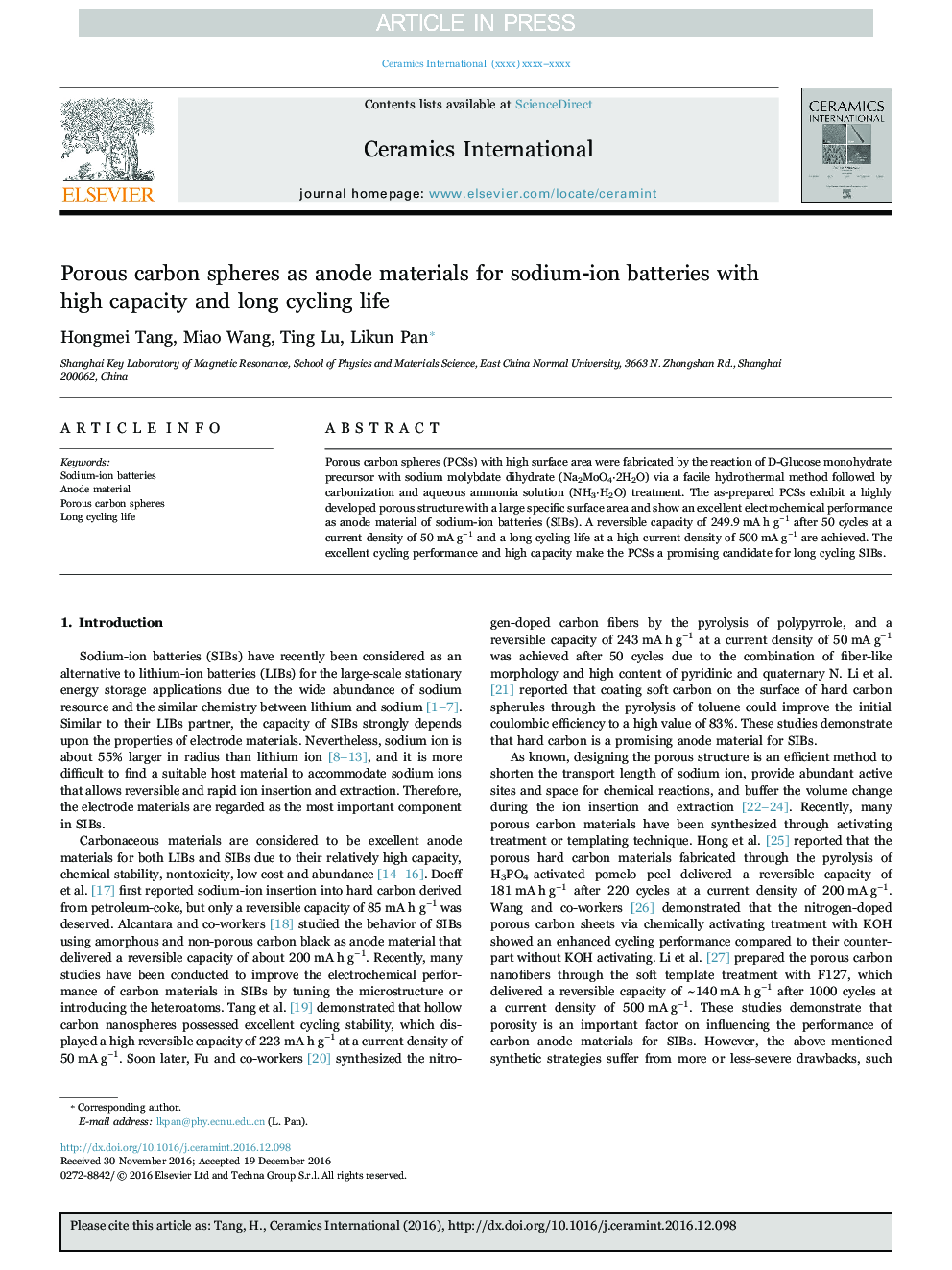| Article ID | Journal | Published Year | Pages | File Type |
|---|---|---|---|---|
| 5439115 | Ceramics International | 2017 | 8 Pages |
Abstract
Porous carbon spheres (PCSs) with high surface area were fabricated by the reaction of D-Glucose monohydrate precursor with sodium molybdate dihydrate (Na2MoO4·2H2O) via a facile hydrothermal method followed by carbonization and aqueous ammonia solution (NH3·H2O) treatment. The as-prepared PCSs exhibit a highly developed porous structure with a large specific surface area and show an excellent electrochemical performance as anode material of sodium-ion batteries (SIBs). A reversible capacity of 249.9 mA h gâ1 after 50 cycles at a current density of 50 mA gâ1 and a long cycling life at a high current density of 500 mA gâ1 are achieved. The excellent cycling performance and high capacity make the PCSs a promising candidate for long cycling SIBs.
Related Topics
Physical Sciences and Engineering
Materials Science
Ceramics and Composites
Authors
Hongmei Tang, Miao Wang, Ting Lu, Likun Pan,
